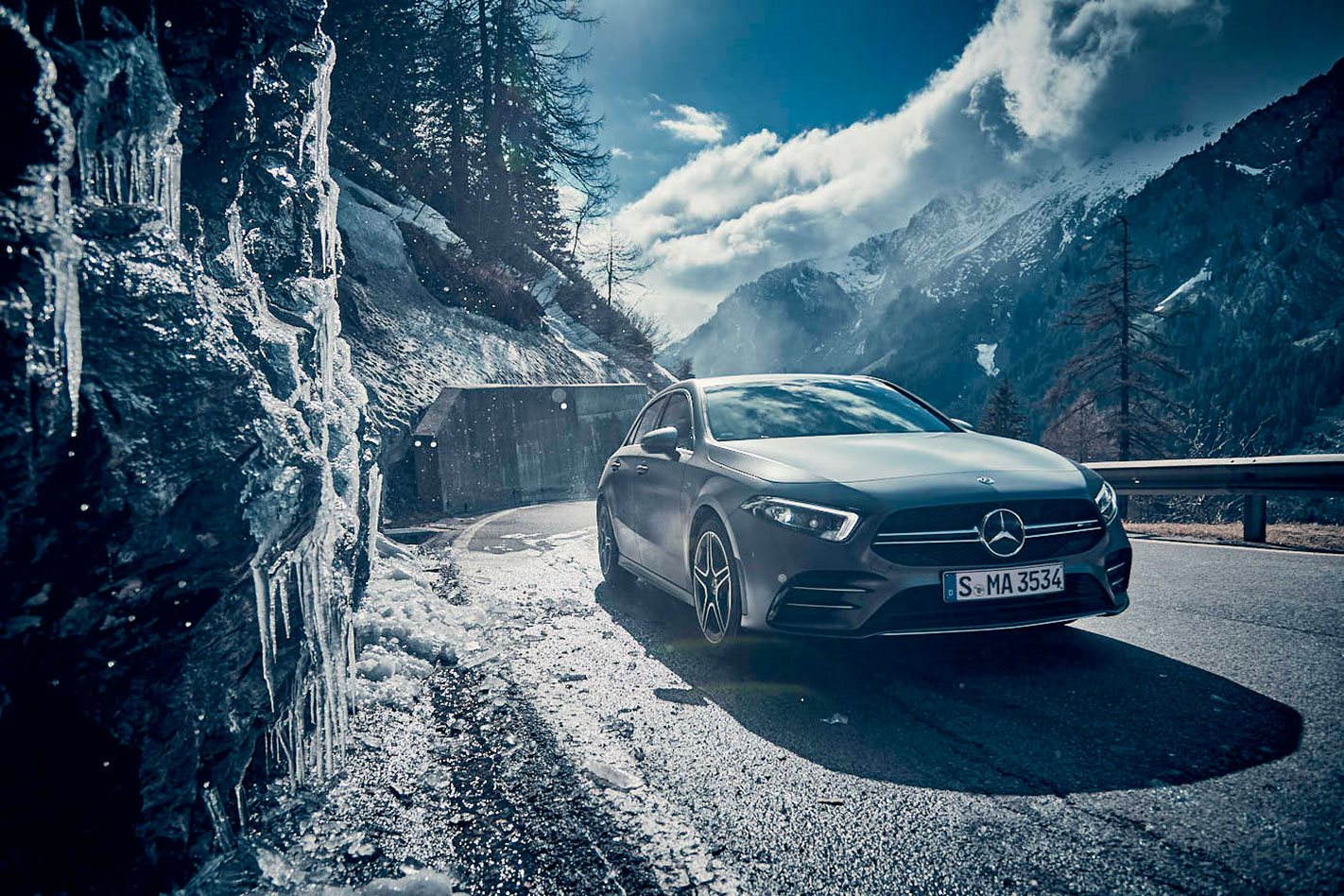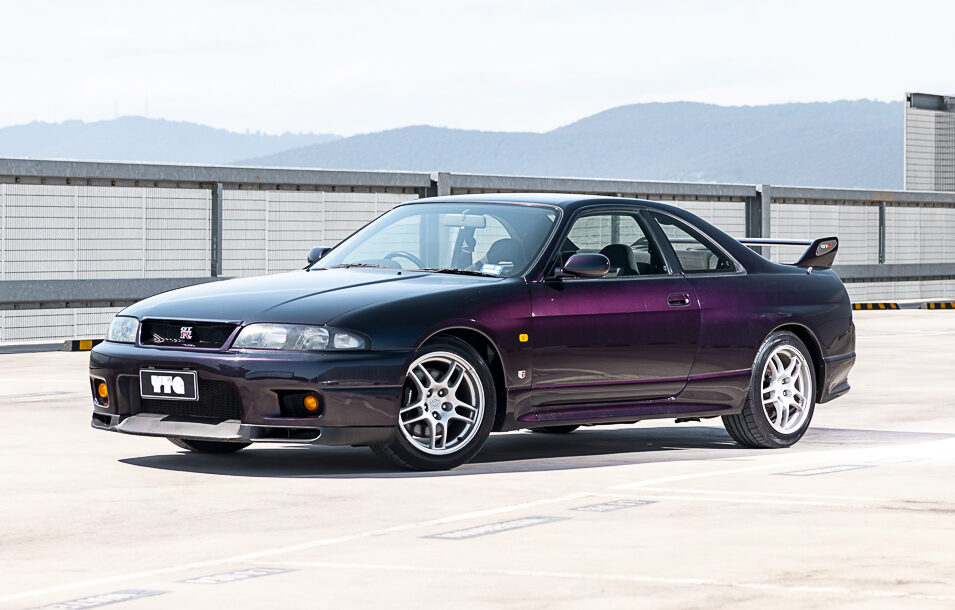IT’S A humdinger of a pub. Old and regal, The Hotel Belvedere clings to a mountainside high in the Swiss Alps, but it’s the road that really sets it apart. It’s so close to the pub that it touches it, the blacktop sweeping by so tightly that boozy beer hounds could feasibly brush passing traffic on their way back from the bar. It’s called the Furka Pass and it’s the kind of road you could imagine James Bond driving… because he has.
Watch the opening sequence of 1964’s Goldfinger and you’ll spot a dashing Sean Connery at the wheel of his Aston Martin DB5, its nose cleaving a path through the pass’s hairpins.
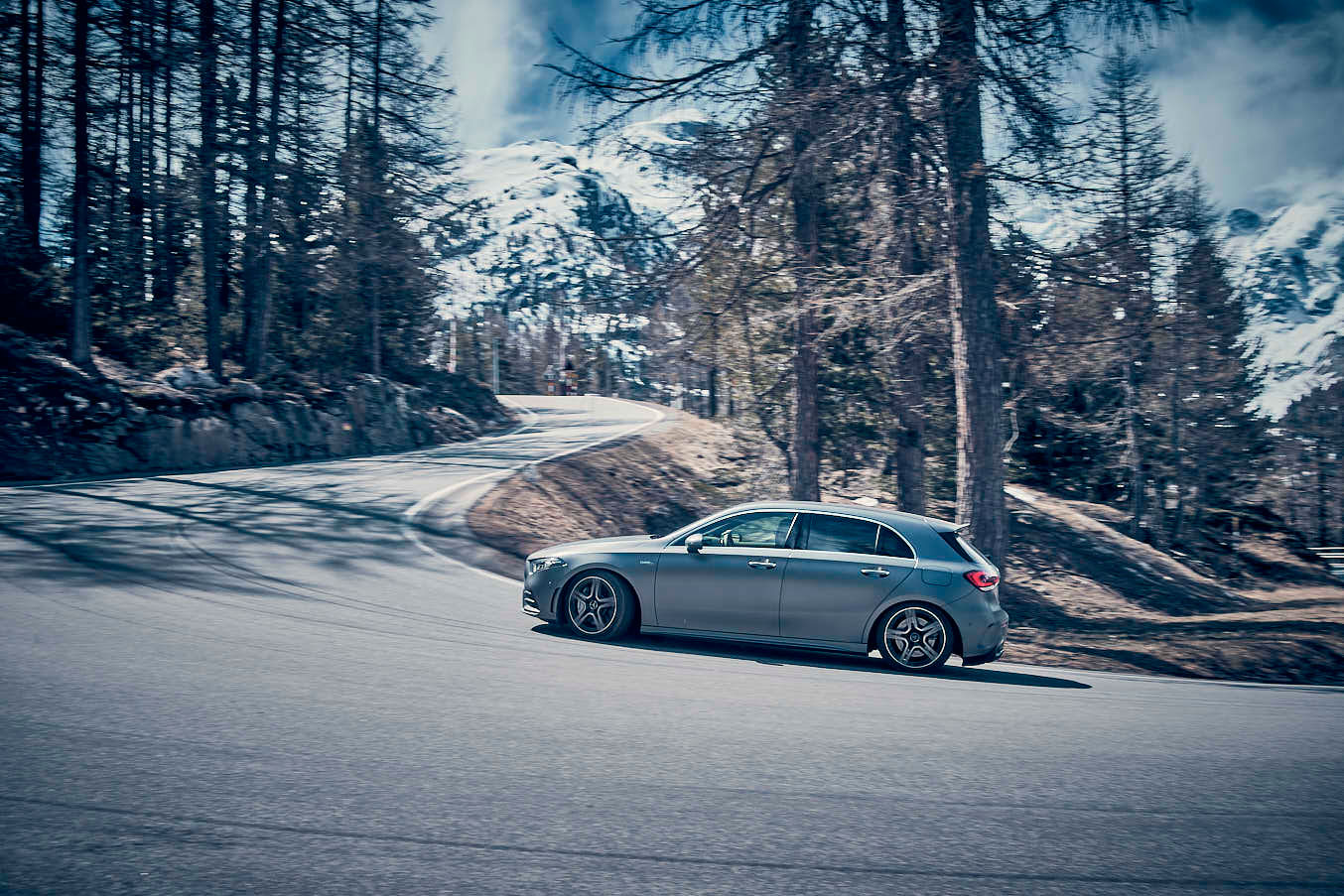
We had to visit it, naturally, and our idea, conceived in the middle of a typically scorching hot Aussie summer, was rather brilliant. Or so we thought.
The crux of it was to pedal AMG’s newest (and cheapest) creation – the highly rated A35 – up the mountainside to deliver some Aussie beer to the publican. A generous gesture, you’ll agree, even if the A35’s positioning as the entry-level AMG meant light beer may have been more appropriate. But come on: driving bliss, with a Bond connection, and a doozy of a pub to explore for lunch? It sounded super.
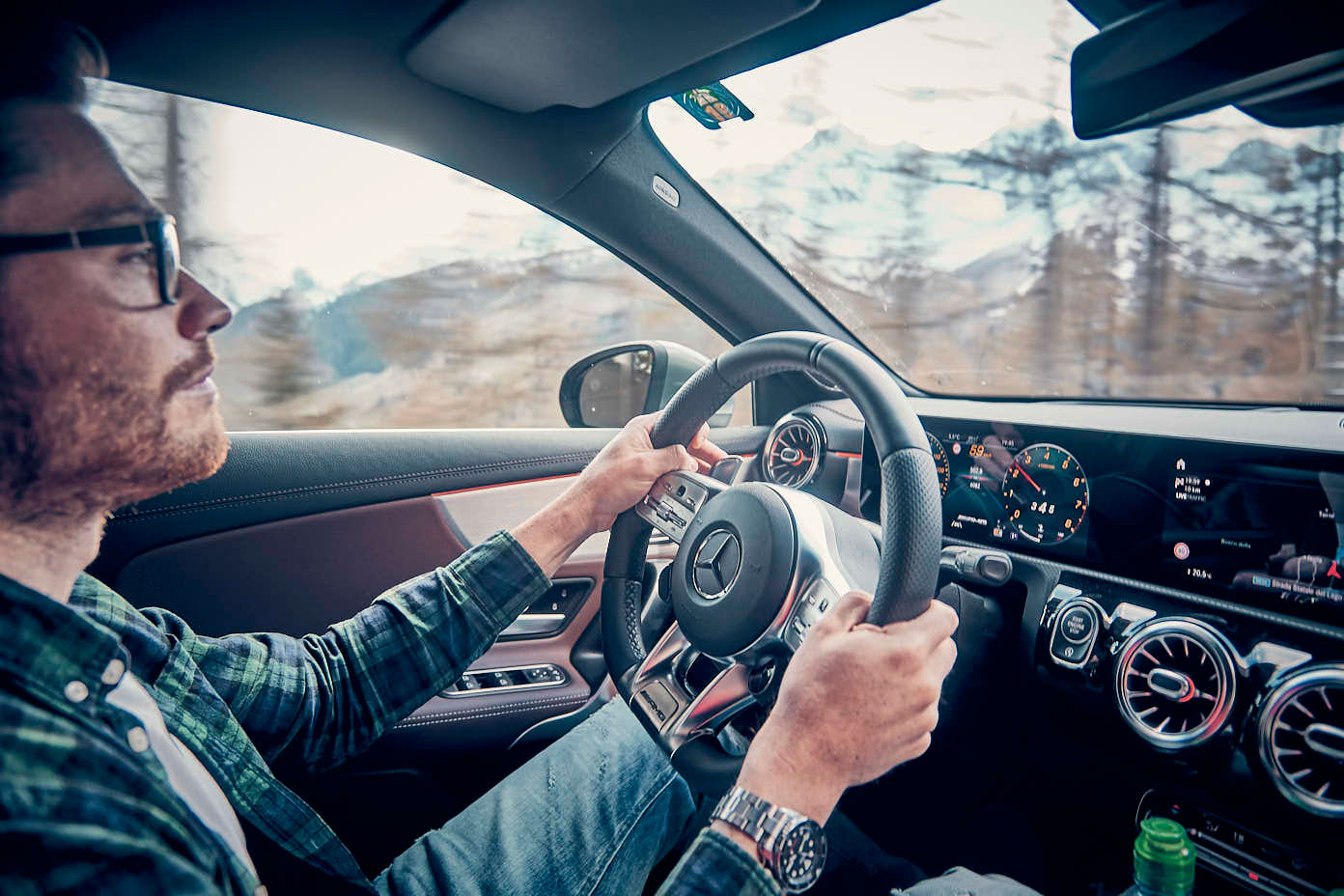
Until the first piece of bad news arrived. Turns out the glacier that once attracted tourists to this particular Alpine area has melted to the point that the Hotel Belvedere has been abandoned, its windows boarded up, its bar now deserted. And contrary to the evidently melting glacier, the Furka Pass was snowed in and had not opened for spring.
So with the speed and grace of a third grade prop, we pivoted. Google suggested there were some other, slightly lower (though no less spectacular) passes we could tackle, which means this two-day adventure now boils down to two questions: is the A35 a genuine hot hatch contender, or will it forever be in the shadow of its bigger brother – the all-new, and slightly unhinged A45? And can the Alps really be as extraordinary to drive as they are to look at?
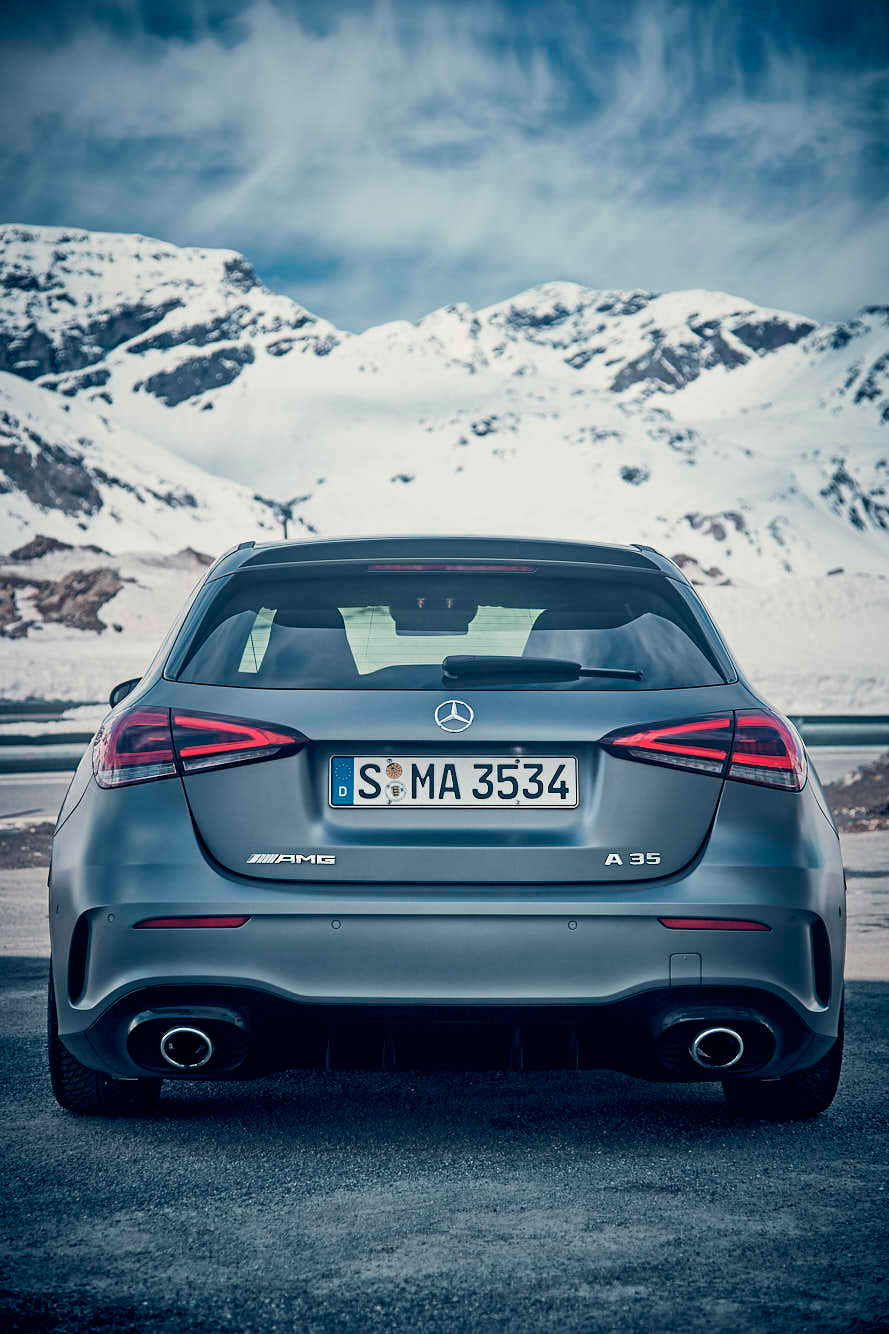
DAY 01 – Passes driven: Julier, Maloja, San Giacomo Filippo, Splugen (13 hours, 4 countries, 653Km)
A word to describe our A35? Unassuming. Without the optional, gawp-worthy aero kit and painted in the kind of dour hue usually reserved for cement salesmen, it appears, on first glance, to look like any other A-Class. I kind of like that. There’s no uncouth barking from the exhaust, either, or any irritating jostling from the AMG-specific suspension as we slip out of Stuttgart and plug our first Alpine pass into the sat-nav.
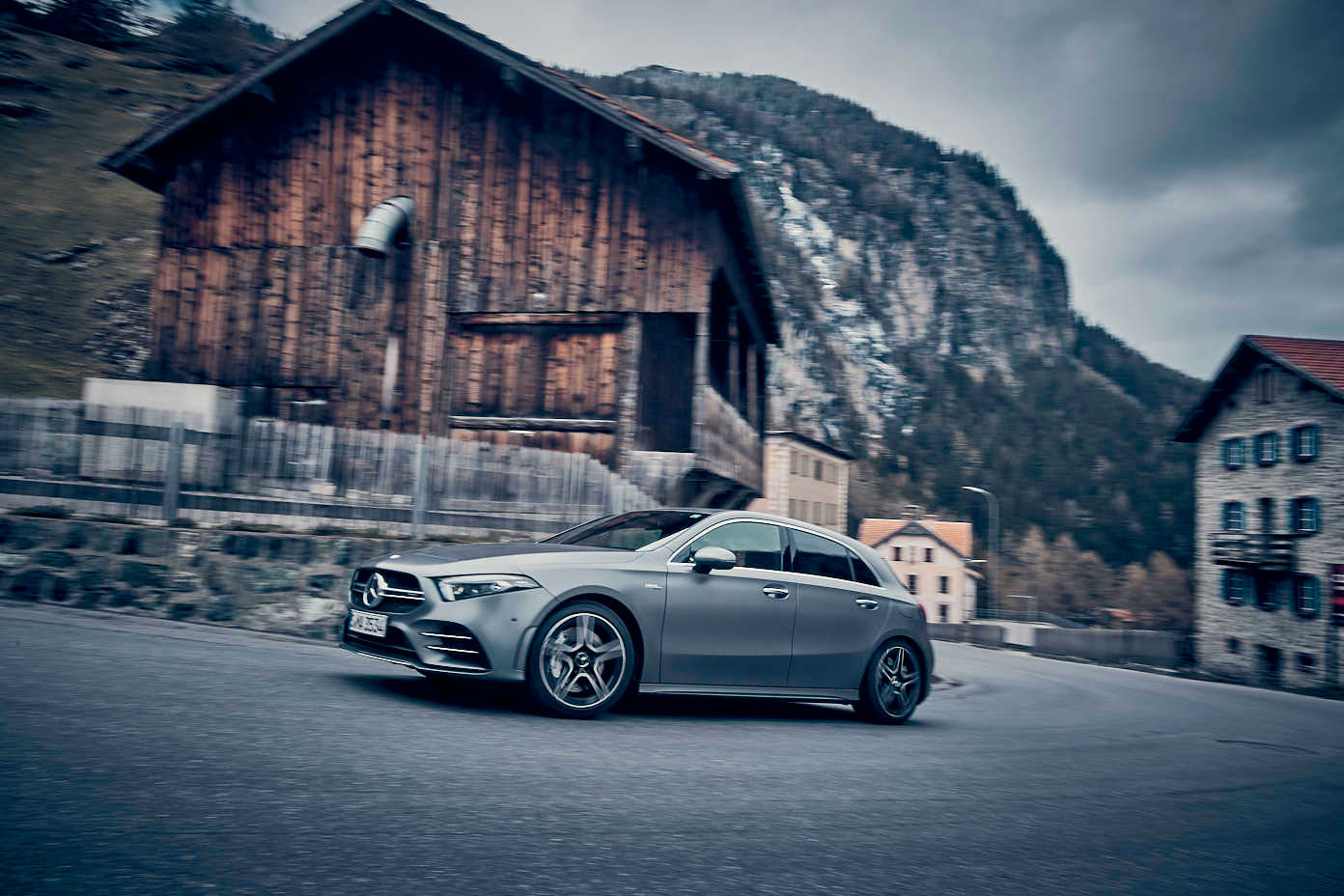
Type ‘Julier Pass’ into Google and you’ll find it listed as one of Europe’s most dangerous roads. Not that you’d know it from the bottom. Rush past the sign that confirms the pass is open and for a while you’ll meander gently through brilliant green countryside, but eventually you start to climb. Lift your eyes at this point and you’ll realise the treat that lies ahead. Hairpin heavy but wide and smooth and with excellent sight lines, the Julier delivers the kind of serpentine seduction most enthusiasts imagine when they’re asked what the perfect road looks like. It’s grippy too, despite the car’s readout suggesting an ambient temp of just 1.0C, and mercifully, traffic is light. This initial section runs for 2km and the best part is actually before the sequence of 11 hairpins. Here, the corners require only half a turn of lock and they flow together beautifully, the car sweeping from one to the next in a natural rhythm. The zig-zag section is more point and shoot, with frenzied bursts of max throttle, heavy braking and quick twirls of the wheel, but the genius is that the hairpin apexes aren’t too acute, or too close together. There’s enough room to run out second and grab third before you pitch the A35 into the next corner.
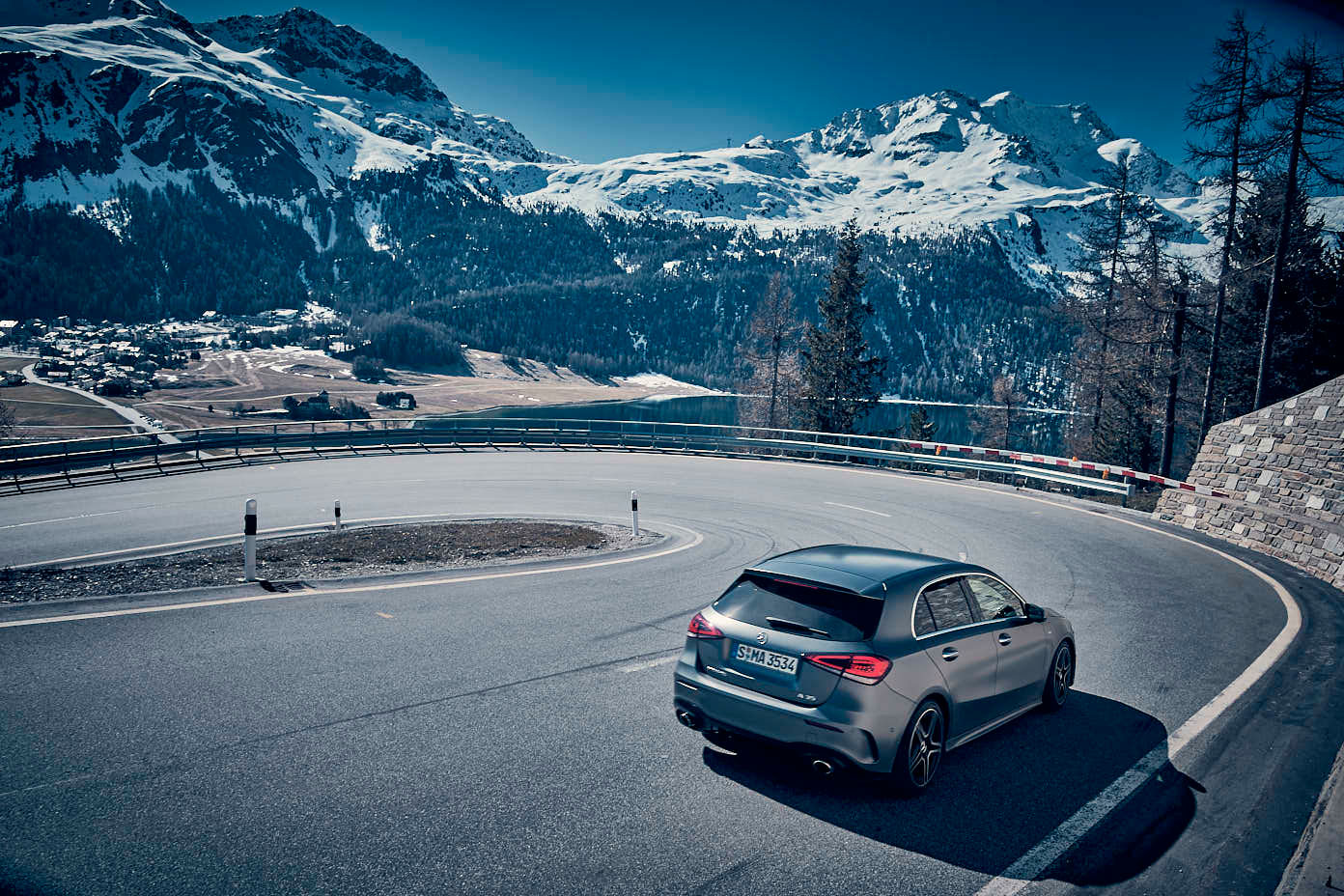
The car itself is a curious one. AMG has worked hard to improve the A35’s dynamics over the regular A-Class range by stiffening up the springs, dampers and anti-roll bars, replacing the front uprights and solidly mounting the rear subframe, yet initially it feels aloof. In fact, even on Michelin Pilot Alpine winter tyres (235/40R18), it’s so tied down that it’s almost impervious to the Julier’s degree of difficulty. There’s no denying its pace, or the tremendous amount of grip on offer – it corners with almost the same tenacity as the old A45 – but what’s lacking is that good old intangible: engagement.
Activating ESP Sport and cycling through the driving modes to Sport+ loosens things up a little, and you do get an intuitive sense of where the limits are, but the sense is that this is a car that doesn’t really understeer or oversteer. It just grips and goes. And as commendable as that is, I finish the first section of the Julier wondering if the A35 might be a little one-dimensional.
It’s an idea to ponder as photographer Steffen and I tuck into some steaming soup at the summit, 2284m above sea level. With the pass’s main restaurant still closed for the winter, our only option is a tiny wooden store run by 89-year-old Godfried Wvss. With swollen knuckles, a stooped stance and a wind-beaten face, Godfried appears to be the kind of bloke who has spent more than his fair share of time exposed to the elements, yet he’s whipcrack sharp. In his broken English, Godfried tells us how he ran a ski school from this shack for 27 years – still skis every day, in fact – and how he has taught countless wealthy Arabs to master the alpine art, including “the Shah of Persia”.
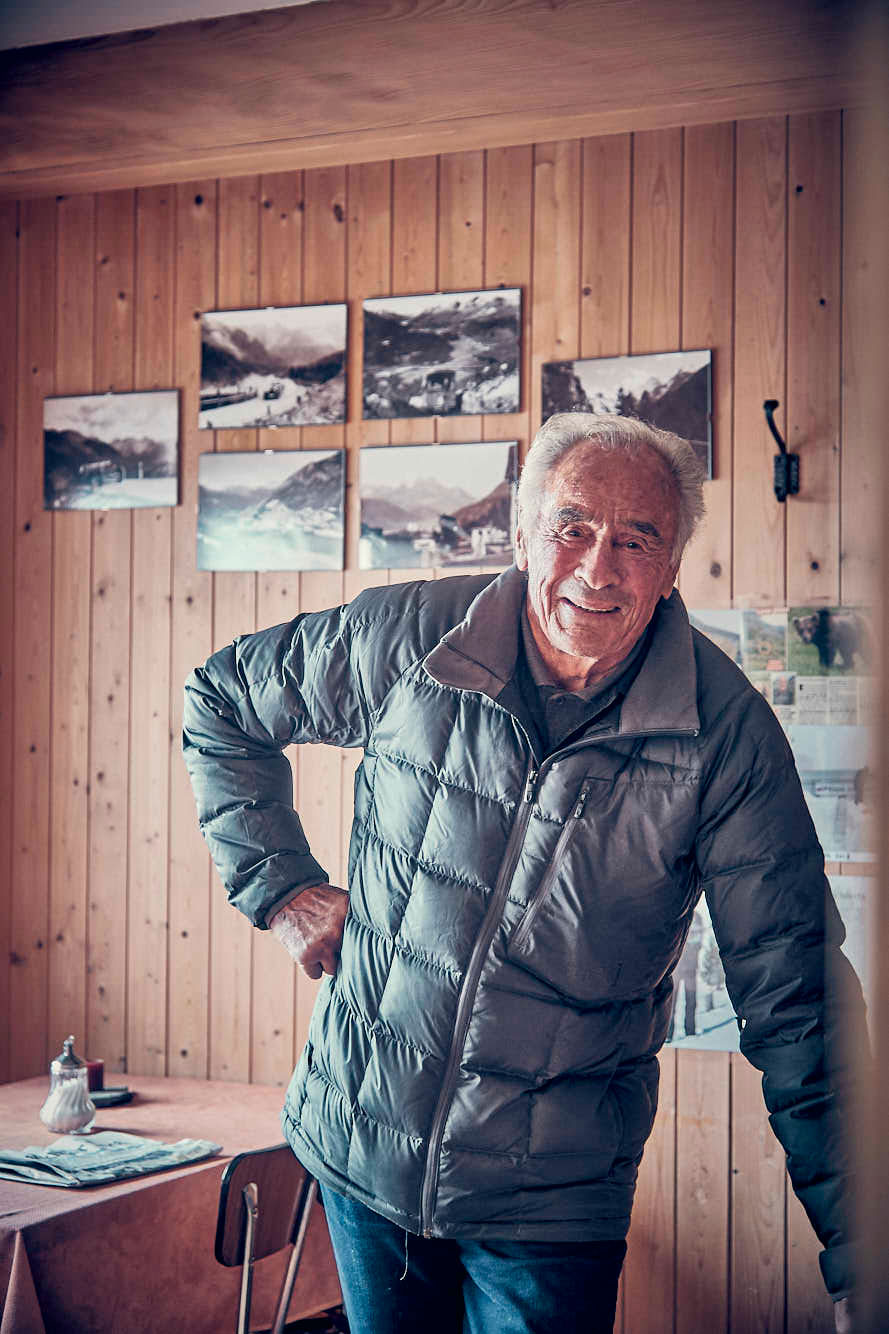
Godfried points out an ancient Roman column right at the summit and explains how the Roman army marched through the Julier in ancient times. Oddly, this seems to still be something of a sore point with Godfried, and as we part he draws our attention to a section of the cliff face looming over his shack. It looks identical to the rest of the surrounding rock, except that its top has buckled slightly under the weight of the snow. Rock doesn’t buckle like that.
“It’s a bunker,” says Godfried as he points out four other hidden artillery gun posts. “To stop the Italians coming through again.” I’d heard rumours that ever-ready Switzerland is littered with secret weapon strongholds (see sidebar), but to see evidence of the country’s preparedness for invasion is strangely off-putting.
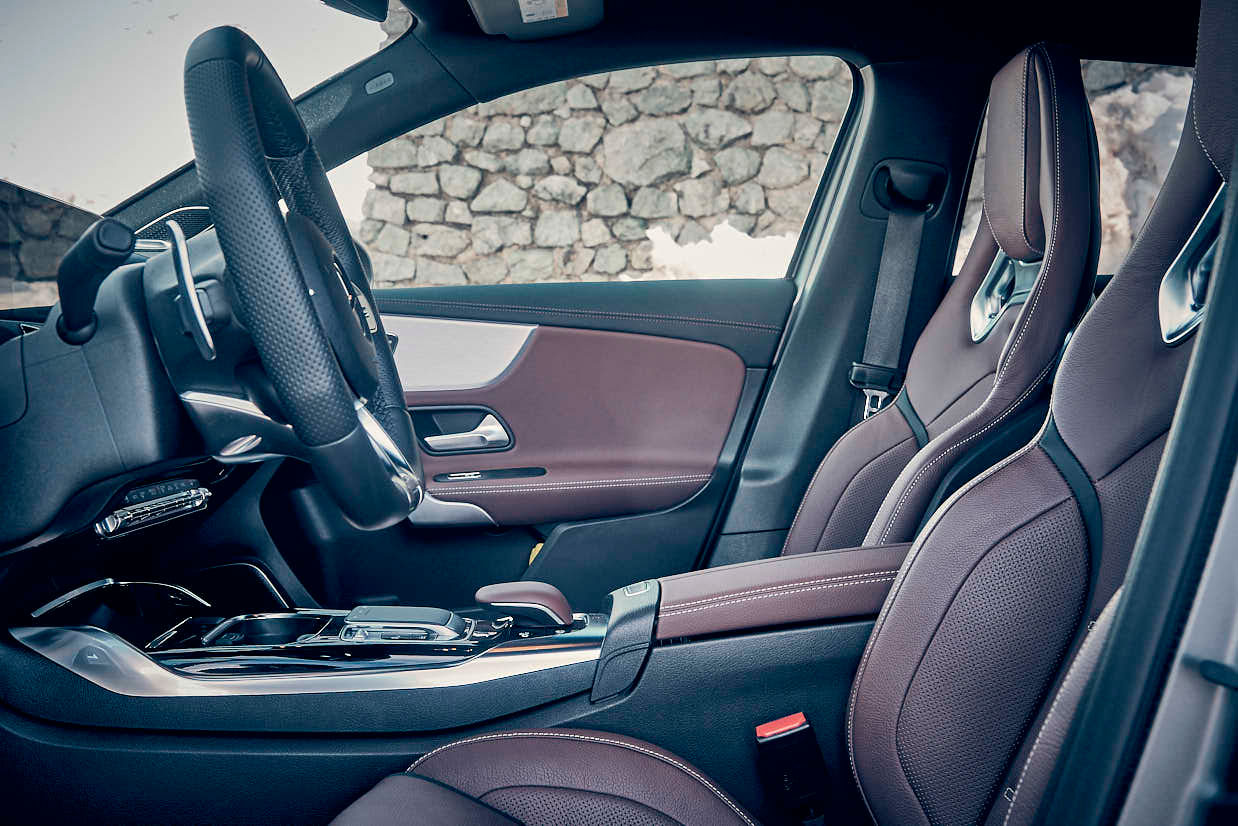
NEUTRAL? LET’S DEBUNK THATSwitzerland is famous for its ‘armed neutrality’, a stance it has held since 1516 which means it doesn’t take part in military conflict. Don’t, however, think it would be a pushover should you be considering an invasion. The Swiss maintain a full-time army and airforce, and require all males between 18-34 to complete military service. Then there are the secret bunkers. Hidden in mountains and also disguised in plain site as barns and cottages, the structures house heavy artillery, guns, supplies and ammunition. There are even rumours of a secret airforce base inside a mountain, which has camouflaged doors that slide open to allow fighter planes to rocket out of.
With the day disappearing we head towards St. Moritz and the promise of our second mountain pass, nestled some 20km away. Dubbed the Maloja Pass, it appears from nowhere, a plunging concrete chute that twists and turns so tightly that it doubles back underneath itself in sections. It’s an extraordinary piece of engineering, and you can’t help but admire the time and effort that went into creating this melange of acute hairpins, bridges and stone walls. It seems purpose built for driving nirvana, but sadly, it doesn’t quite turn out that way.
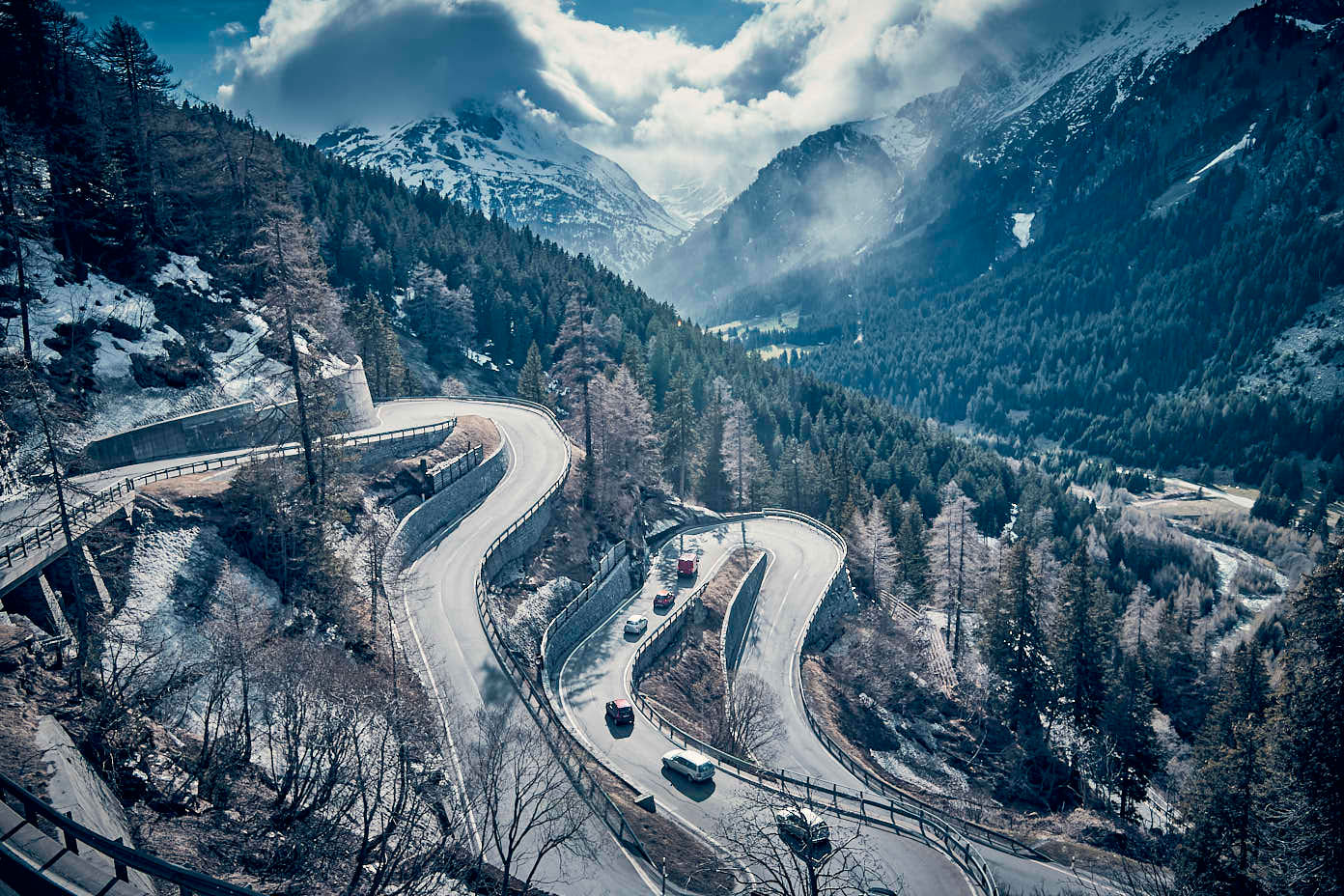
We’ve arrived at 5:30pm and commuters clog the Maloja’s hairpins, yet it’s the buses that are the real issue. The lumbering beasts take up both lanes as they swing through the many turns and the whole pass is so choked and clogged that we almost give up. Mercifully, after 30 minutes of waiting, I steal a clean run.
Because the Maloja is so much tighter than the Julier, the trick here isn’t only how quickly you can apply lock, but how fast you can get it off again. The A35 acquits itself well. The steering (2.5 turns lock-to-lock) is quick-witted and accurate and has a tight-enough turning circle to make it around without needing to swing wide to open up the corners. Again, the A35’s purchase is immense and its ability to pivot at the apex and slingshot out the other side is impressive. I find myself getting on the throttle earlier and earlier, but what I really want it to do is slide a little. To show some character and to dance around the edges of grip. Instead, all I get is steadfast surefootedness. It’s enough to have me wondering what an Alpine A110 or a BMW M2 would be like on this road. Epic, probably.
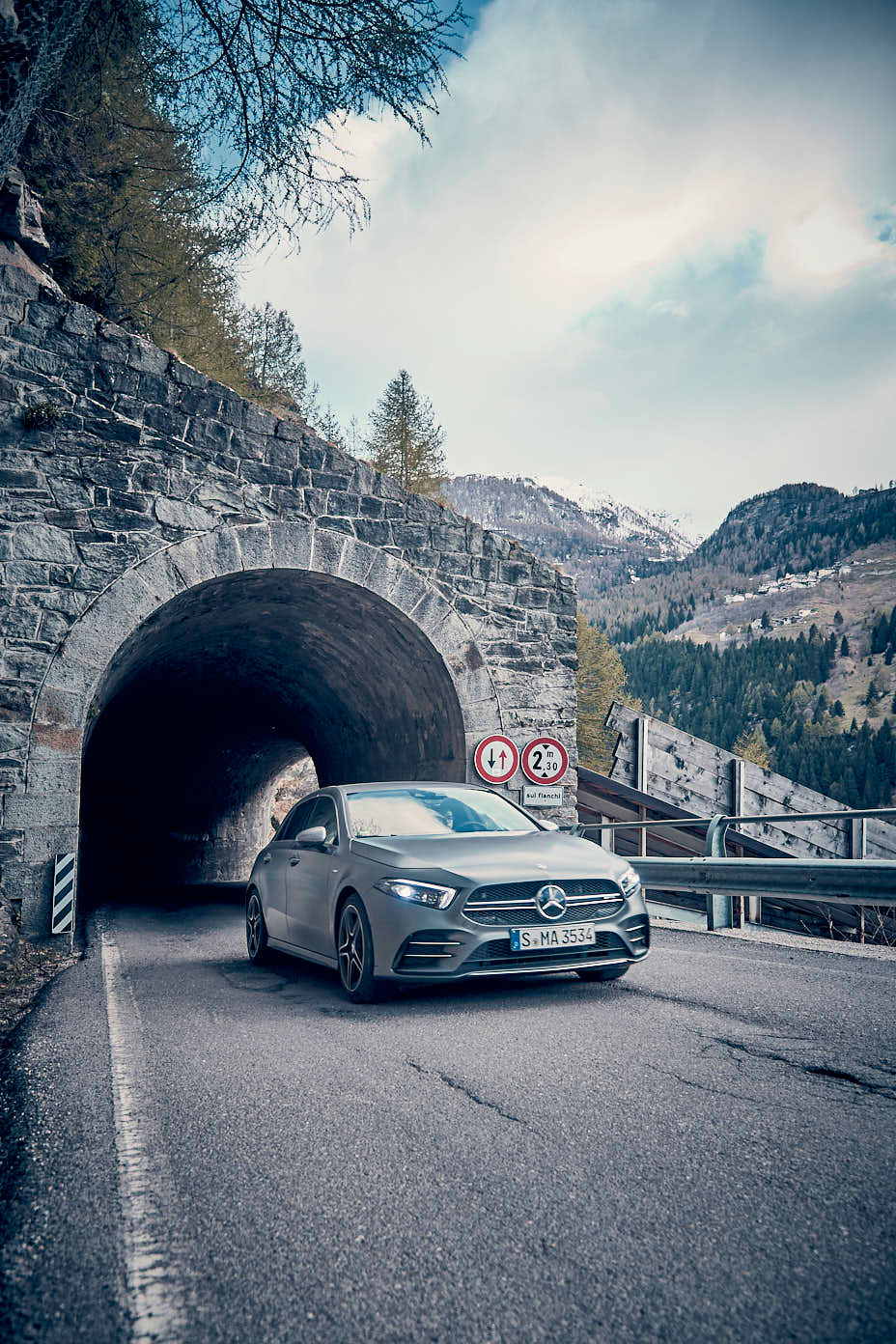
With the Maloja behind us we dive briefly into Italy for the circuitous route back to our final driving challenge of the day – the Splugen Pass. This is the one I’ve been looking forward to most, and also the one that Godfried had suggested might be closed. It isn’t, but despite some truly epic Game of Thrones-esque scenery, the Splugen turns out to be a disappointment. It’s freezing, with deep snow banks on either side of the road and black ice lurking in the shadows. It’s narrow too, and unlike the Julier, which scythes from hairpin to hairpin beautifully, the Splugen’s apexes are so acute and close together that it’s more about survival than fun. I’m suddenly grateful for the A35’s unwavering purchase, but as we pull into our hotel, I can’t shake the feeling that the car has more to give. It’s a beguiling thing, this A35, with a degree of subtlety I’m not used to from AMG. I’m convinced it has layers left to peel back.
DAY 02 – Passes driven: Julier, Bernina (7 hours, 3 countries, 340Km)
DAY TWO dawns bright, crisp and clear. We’ve lucked in with the weather. Snow still lines the roadside, but the sun is warm and the sky devoid of any clouds. We achieved more yesterday than expected, so today we get a bonus Pass. After much debate and a few beers at dinner the evening before, we’d settled on the Bernina, with its 2328m summit the highest yet. And to get there we have to go back over the Julier Pass. Nice.
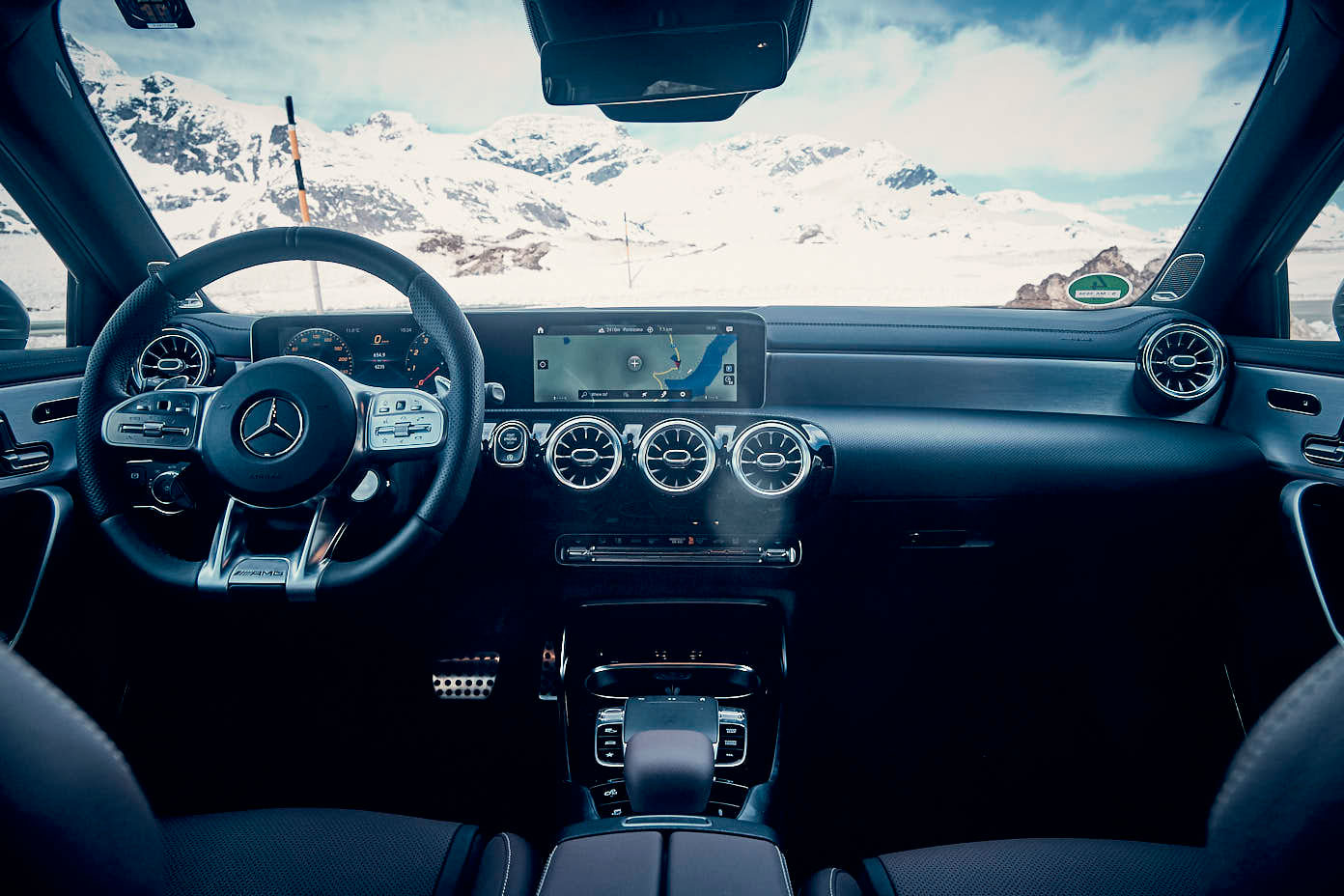
Second time around, the Julier still manages to surprise. Going up was more fun than coming down, though the AMG seems to relish our new trajectory. Dive-bomb in too hot and the front will start to push, but if you moderate your entry slightly it’s so hunkered down and neutral that you can flatten the throttle before the apex and just let the car manage the traction. It’s a wicked point-to-point machine and the engine’s plenty plucky, too. Based on the M260 2.0-litre turbo four, AMG’s changes include a new twin-scroll turbo to lift outputs to 225kW/400Nm. There’s plenty of mid-range shove (at 4.7 secs 0-100km/h, it’s only 0.5s slower than the old A45), but it’s never musical or truly engaging.
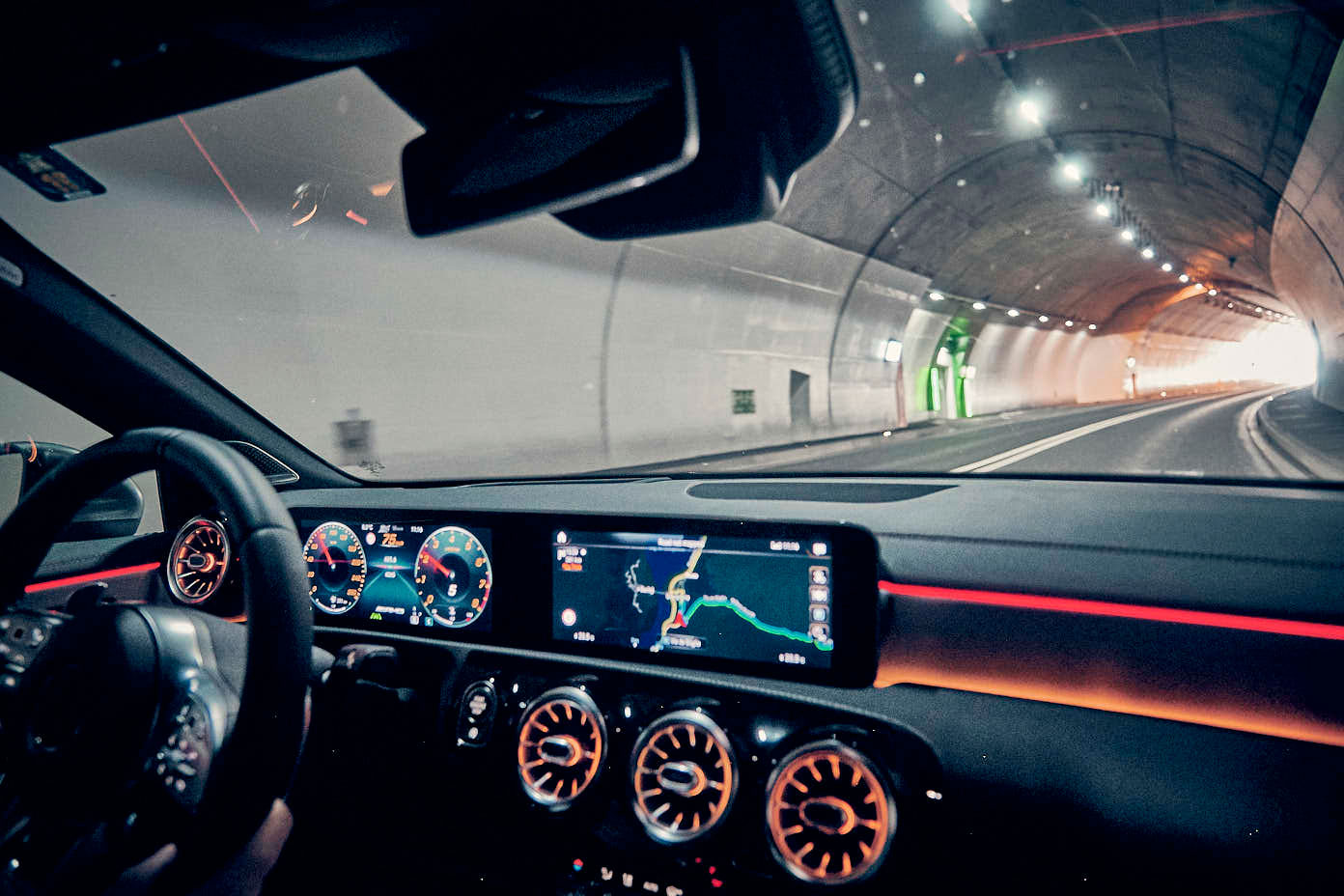
It’s only 30 minutes to Bernina and this section of the mountain range instantly feels more Alpine. An enormous gondola slowly transports snowboarders up the mountain and the road is punctuated by poles to measure snow depth every 15 metres or so. The climb to the summit is fairly mundane, though we aren’t the only ones here keen for a drive. Halfway up we spot a Porsche Taycan test mule, its quarter panels covered in tape with fake exhausts stuck to its rump. It sits alone in a deserted car park and the reception, when we pile out to say hello, is frosty. Mentioning I’m from Wheels is a grave error and before I can say another word, the windows are up and the Taycan rockets away at speed.
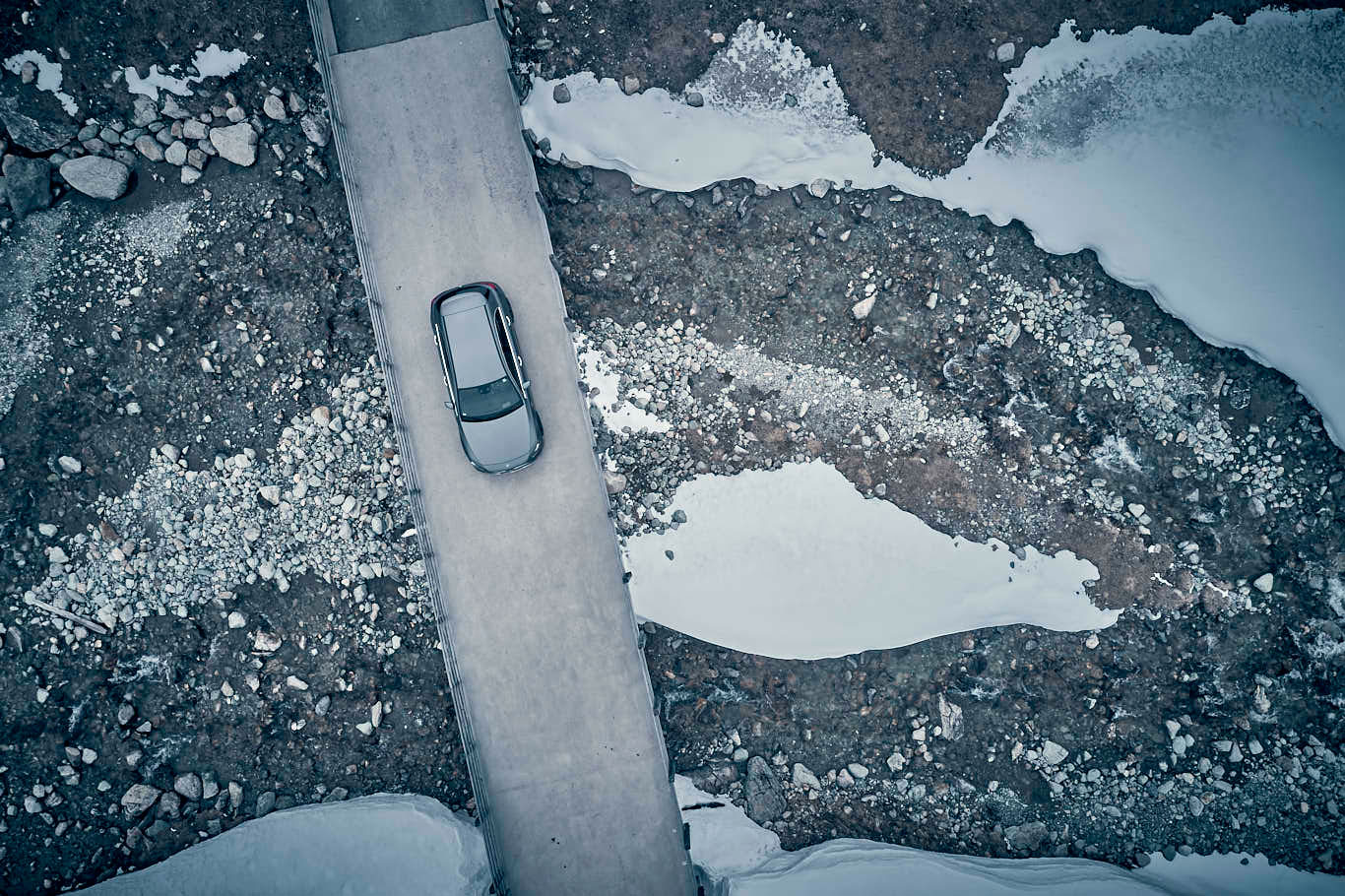
Lurking on the far side of the pass is the highlight of our adventure. Wide and nicely cambered, the Bernina combines all of the goodness of the Julier but adds faster, open sections that allow the A35 to tear through its first four gears. It’s also deserted. And twice as long.
The A35 and I have also come to an understanding. I realise I’ve been over-driving it in an attempt to get it onto its tippy-toes. Instead, it’s better to let it settle into its own rhythm and revel in the tenacious grip, rather than try to breach it.
Accept this and the A35 is an extraordinarily accomplished hatch. But now that the A45 has been revealed, is there room or reason for it exist? Blasting along the autobahn at 180km/h on the way back to Stuttgart provides time to reflect.
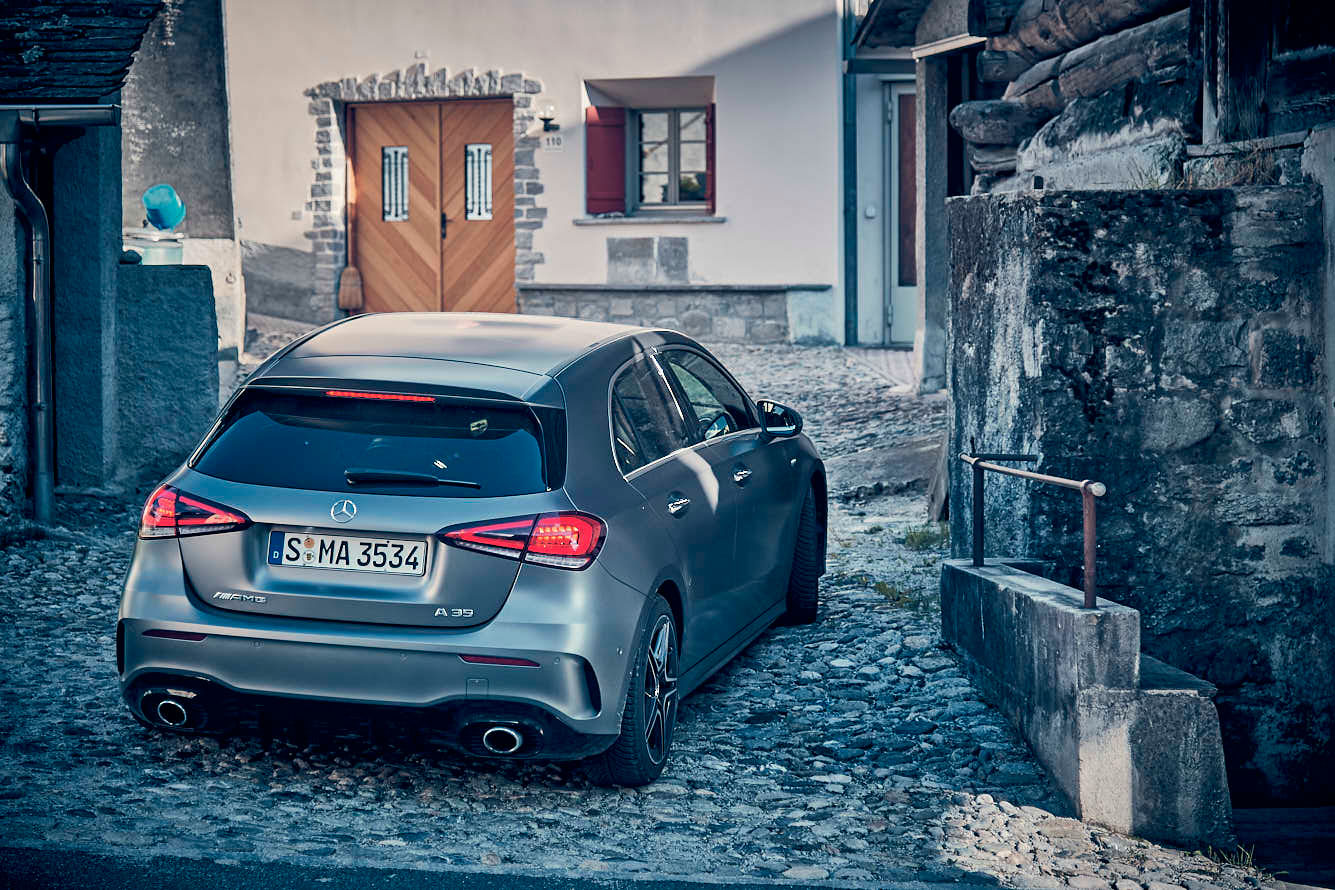
Even at this speed the A35 is solid and comfortable, its cabin infused with enough screens to appease even the fussiest of millennials. Of the past 32 hours, I’ve spent 24 of them wedged into its heavily bolstered driver’s seat yet my back feels fine. Nor am I overly fatigued, or feel as though I’ve been shaken to death by overly firm suspension. Good luck trying that in the A45. So yes, it has a personality all of its own, just like each of the passes we’ve driven. It really is petrol-head heaven, this part of the world. The kind of playground seemingly purpose built to facilitate the thrill of driving. Even if there’s no longer a doozy of a pub waiting at the end of it.


